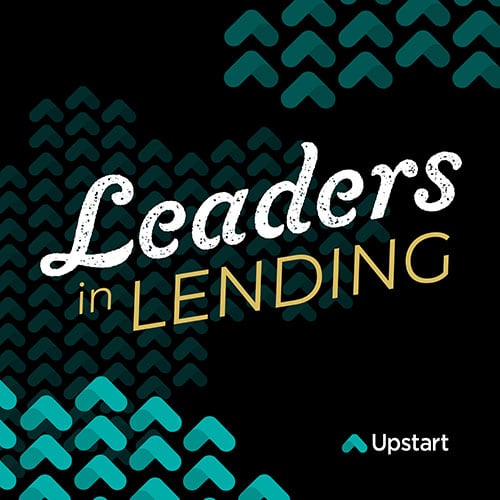Leaders in Lending | Ep. 87
Seismic Shifts in the Indirect Lending Landscape
Adam Brice, SVP of Lending at EFCU Financial, joins the latest Leaders in Lending episode to share his auto lending experiences. In addition, we discuss what’s coming in the industry's future and the role that AI will continue to play.


GUEST SPEAKER
Adam Brice
Adam Brice has served over 15 years in the credit union industry. He joined EFCU Financial in Baton Rouge, La., in 2009 as an indirect underwriter before becoming the SVP of Lending. During his time in the role, Brice has grown the mortgage and indirect lending portfolios while keeping delinquency rates among the state’s lowest. Brice's mission is to enable EFCU to deliver, "great rates, great service, and new, inventive products to meet their [members'] financial needs."

ABOUT
EFCU Financial
Key Takeaways
-
The state of indirect financing in auto lending
-
How Credit Union Service Organizations (CUSOs) can enable CU success
- How AI lending fits in with a common sense approach


"You're going to start seeing some changes in the indirect landscape with dealerships, and one of the things I automatically point to is Tesla."

"I foresee lending underwriting to be all AI within the next 10 years."
EPISODE RECAP & SUMMARY
Over the past few years, the car industry has been hit by multiple disruptions due to supply-chain issues and lack of inventory. Regardless, people still are buying cars, and they’re certainly still applying for auto loans.
Adam Brice, SVP of Lending at EFCU Financial, joins the latest Leaders in Lending episode to share his auto lending experiences. In addition, we discuss what’s coming in the industry's future and the role that AI will continue to play.
Join us as Jeff and Adam discuss:
- The state of indirect financing in auto lending
- How Credit Union Service Organizations (CUSOs) can enable success
- How AI lending fits in with a comprehensive approach
Current state of indirect financing in auto lending
The past several years have revealed specific trends within the automotive industry that would shift how dealerships and lenders function indefinitely.
During the pandemic, car dealerships decreased onsite inventory significantly due to microchip shortages, supply-chain issues and more. While they predicted this would lead to a mass dropoff in consumer sales, they were wrong.
People were still purchasing vehicles, even if it meant putting money down on a car that wouldn’t arrive until weeks later.
This shift in purchasing opened up great market opportunities for direct-to-consumer and online sales, resulting in more significant opportunities for indirect financing.
While many lenders still required loan applicants to come into a local branch to fill out a loan application, consumers began to borrow indirectly through the channels from which they purchased the vehicle, forgoing many requirements that may be considered modern inconveniences.
In Adam’s experience, these major sales channels don’t usually use local branches.
“They prefer to deal with the National lenders,” he says. “That's an opportunity for some national lenders, but it starts cutting out the small credit unions and financial institutions.”
This shift towards indirect lending may unveil unique challenges for smaller local lenders and demand that they invest in new partnerships and strategies. But it also allows smaller lenders to expand their reach with these innovative structures and systems, particularly if they band together.
Using CUSOs in competition against larger financial institutions
While indirect lenders may lean away from smaller local credit unions, there is hope for those that partner together. Despite being competitors, credit unions can band together in a Credit Union Service Organization (CUSO), allowing them to provide similar or alternative services to those of national lenders.
“When you have special situations, credit unions can band together as one conglomerate to compete with national lenders,” Adam says. “I absolutely could see something like that happening more often in the future.”
Partnering with other lenders also offers the benefits of shared risk and reward. While lending alone may require more strict guidelines to minimize risk, banding together offers greater lending opportunities in which each union can distribute liabilities and broaden its capacity.
AI lending and a comprehensive approach
Another promising tool in the future of automated lending is AI. While AI alone may not yet be substantial enough to completely determine which loans to approve, when used in hand with a thoughtful, comprehensive approach, AI offers many benefits in increasing overall credit access and decreasing time investment.
An effective, comprehensive approach requires digging into multiple factors of a loan application rather than approving or denying it based solely on primary data.
“Ask yourself, does the loan make sense? Is the member going to pay that loan back? Do they have the ability? Do they have stability? Do they have the willingness?” Adam says. “If it makes sense, make an exception on a policy.”
This multifaceted method in which the underwriter assesses the complete picture of the application, even if the subject of the loan raises one or two red flags, such as vehicle year or mileage requirements. As technology advances, AI can also utilize a similar approach.
While AI may not be equipped to consider emotion or all areas of context around a loan application, the increasingly intelligent systems have the potential to incorporate the foundational principles of Adam’s approach.
As AI advances, systems no longer require hard policy cuts and can automate some policy exceptions by assessing more factors — ultimately improving access to affordable credit. Compared to traditional automated systems that often place customers in one box or another, AI can assess applicants more holistically and therefore has great potential in auto lending and beyond.
Want to learn more about the current state and future of auto lending and how AI plays a role in modern approaches and credit access? Listen on Spotify, Apple Music or wherever you find your podcasts.





